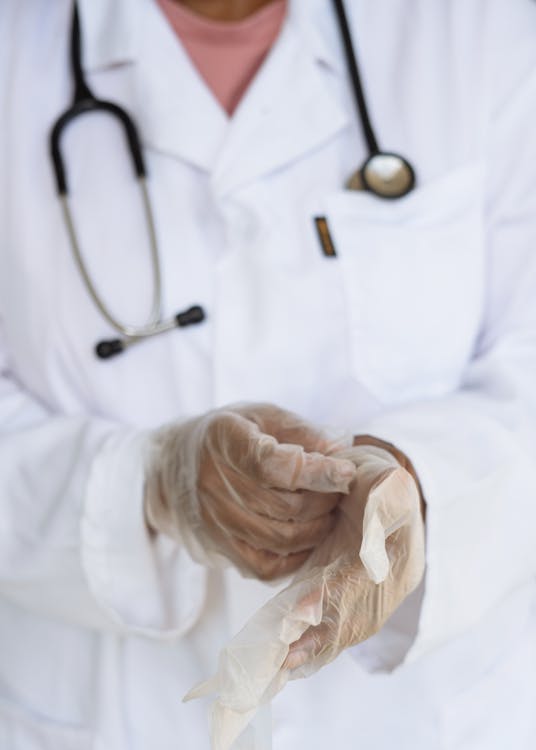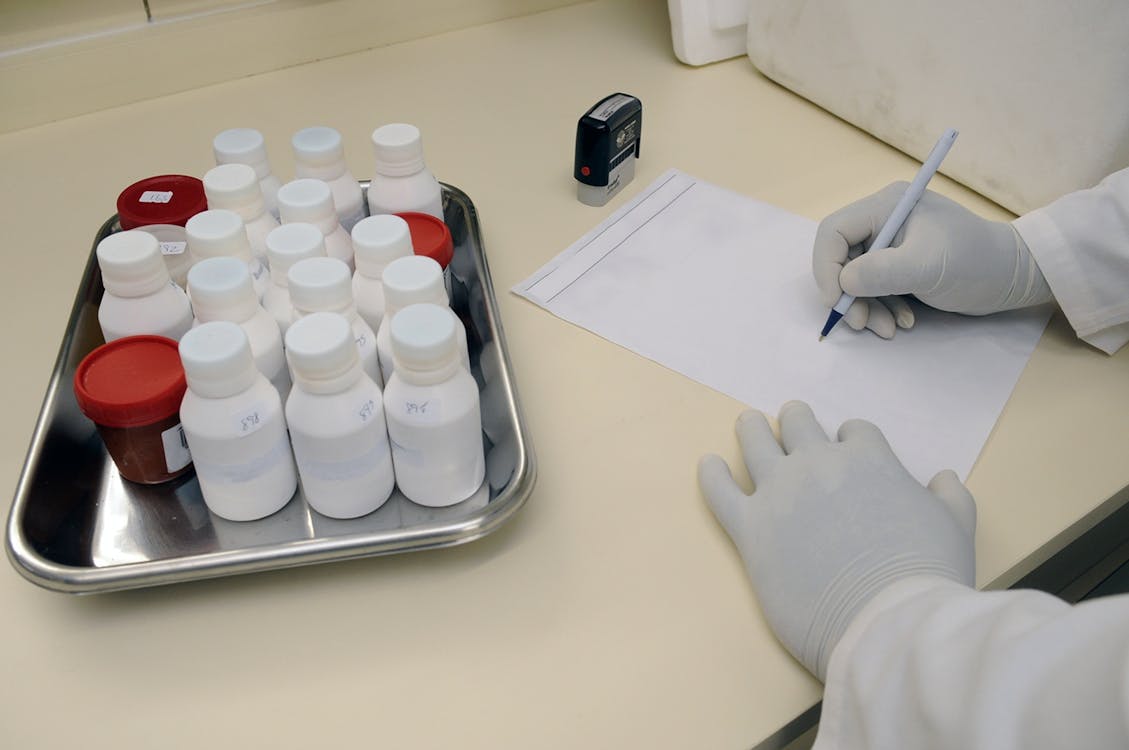
Crop doctor with stethoscope preparing for surgery in hospital. Photo by RF._.studio – Pexels
10 Interesting Facts about Matilda Evans
Among the things I discovered while researching was the number of prominent Black women who attended Oberlin College. A few of them, such as Anna Julia Cooper and Mary Church Terrell, I had heard of before. However, it was intriguing to learn some of whom, including Dr. Matilda Evans, were not nationally famous yet were extremely important to the black community.
Dr. Evans was the first African American woman in South Carolina to be legally authorized to practice medicine. Matilda Evans, the eldest child of Anderson and Harriet Evans, was born on May 13, 1872 in Aiken, South Carolina. She, like numerous other children of her racial group and community, spent her childhood working in the cotton farms.
Her school days started at the Schofield Industrial School, which was founded by Martha Schofield, a Philadelphia Quaker. Ms. Schofield was instrumental in Matilda’s academic endeavours and aspirations, even assisting her in obtaining funds for her attendance at Oberlin College.
1.Matilda’s years in college and the beginning of her career
After earning a degree from Oberlin College in 1891, she left in 1892 to take a job as a teacher at Haines Institute in Augusta, Georgia. Matilda joined Woman’s Medical College in Philadelphia after one year of educating, thanks to her savvy mentor, Schofield, who swayed a rich individual, Sarah Corlies, to help finance her academic achievement. Alfred Jones was the Secretary of the Executive Committee of the Board of Corporators of the Woman’s Medical College of Pennsylvania.
Evans obtained her degree in medicine in 1897 and neglected her dream of serving as a clinical missionary in Africa to establish a practice in Columbia, South Carolina.
2.Doctor Evans was the very first black woman to open a black-owned hospital in Columbia
Evans focused on surgical procedure, midwifery, ob / gyn, family medicine, and hygiene practices, treating patients from her neighborhood until she founded Taylor Lane Hospital in 1901, Columbia’s first black-owned care facility. Due to her professional judgment and competence, she had an interracial customer base, which was unusual for the time. She utilised money from rich white patients to provide free or discounted treatment to black patients, particularly women and children.
3.Evans hospital was one of the most popular hospitals because of its benefits

A syringe and different medication. Photo by Qimono – Pixabay
Evans founded the Taylor Lane Hospital in 1901 in a slaveholding, 18-room villa near Taylor and Heidt streets. It also functioned as a learning centre for African American nurses and physicians, which include the Harvard Medical School graduates.
Evans financially supported Taylor Lane, which largely served black men and women who could not pay for health care, with charitable contributions, private-practice costs accumulated from white patients, and proceeds from an on-site, 200-hen poultry farm and an off-site truck farm situated on three acres behind the hospital. Patients were given milk and butter from an on-site dairy. By 1910, the hospital had treated over 4,000 African Americans.
4.Matilda dabbled in quite a few pots in order to support the black people in her community
Matilda Evans established The Negro Health Journal of South Carolina, a weekly newspaper, and a project for extra curriculum activities for economically disadvantaged boys. Dr. Evans was elected as president of the Palmetto State Medical Society and vice president of the National Medical Association, and he served in the Volunteer Medical Service Corps during World War I.
5.Evans was also an author and helped her mentor write her memoir
She founded St. Luke’s Hospital and Evans mental asylum in 1914. In particular with respect to her accomplishments as a physician, public health advocate, and mentor to future generations of healthcare caregivers. Dr. Evans also wrote a memoir of Martha Schofield, the pioneer of the Normal School in her honor. Dr. Evans established the Negro Health Association of South Carolina within the same year . Dr. Evans launched a health center that was free of charge in the 1930s to help South Carolinians who had been affected by the Great Depression.
6.St. Luke was not your average facility, she made sure it was prominent enough
Evans founded St. Luke’s Hospital and Nursing Training School, which he directed until 1918. The clinic, which was found in Columbia, had 14 rooms and 20 beds. The facility, like Dr. Evans’ public image, was highly lauded and thrived during the 1920s and 1930s. It was authorised during WWII, when the Cadet Nurse Corps curriculum was praised. The National League for Nursing granted that school full qualification in 1962. College courses were incorporated to the education system in 1969.
7.Evans was a firm believer in helping her community, especially the younger generation

Metal railings near swimming pool. Photo by Markus Spiske – Pexels
Matilda Evans was very involved in her community. She founded a community medical association, a community facility, and a boys’ swimming pool (Dr. Evans Park and Swimming Pool) in addition to Taylor Lane Hospital (which became St. Luke’s Hospital and Training School for Nurses after a fire disaster occurred in the first hospital), along with other numerous advantages to Columbia’s black community.
Evans also adopted seven children and fostered over two dozen more throughout her life. She was also primarily accountable for the acquisition and capacitating of The Dr. Evans Park and Swimming Pool for the general public.
Evans also carried out a study of black school-age children in Columbia, South Carolina, and discovered significant health-care issues; she used the findings to enforce regular medical tests in schools.
Evans was particularly concerned about black children. She claimed that, like academic achievement, medical care should be a civic privilege and a governmental obligation. She was a strong supporter of public health care and successfully lobbied the South Carolina State Board of Health offering free immunisations to black children.
Her project with the less privileged communities inspired her to establish the Columbia Clinic Association in 1930, which offered less fortunate families with medical services (such as immunisations and check-ups) and health education. Evans’ health education objective was carried on by Negro Health Association of South Carolina. Evans also established the Good Health Association of South Carolina to try to persuade and encourage individuals that they could enhance their own wellbeing by adhering to sound healthy lifestyles and hygienic sanitary habits.
8.Matilda provided a home for many children in the black community
Evans never married, but she did find the time to raise 11 children who needed a home. Several of the children she became a mother to were abandoned at her medical facility however, she also raised five children from dead family members. She instilled in the children respect, hygiene, and decorum, as well as the chance for a higher education, which she herself had. People of all ages relished the amenities she shared at a community center she constructed on her 20-acre land.
9.She stood for great differences and was also a very religious woman
The public health system in the United States was troubled by the deaths of World War I. By July 1912, physicians were signing up for army duty at a rate of 540 per week, as reported by the International Journal of Surgery (Vol. 31, Sept. 1912), and the US Army predicted that at least 50,000 physicians would be required for the military effort. Because of the growing market, numerous areas were left without physicians, so the Volunteer Medical Services Corps (VMSC) was formed to guarantee that citizens did not go without appropriate healthcare. She was a religious woman who chaired the Upper Diocese Council of the Episcopal Church.
10.Evans legacy continues to live on to this day

Person in white hand gloves writing on white paper. Photo by Pixabay – Pexels
Dr. Matilda A. Evans passed away on November 17, 1935, leaving a devastated community just under a year after the death of practitioner Celia Dial Saxon. Even though her legacy continues on through the yearly basis Matilda Evans Award, which is awarded to exceptional doctors by Prisma Health Richland Hospital, in addition to a historical plaque outside of her former household at 2027 Taylor Street, her life and service to Columbia continue to stay distinctive and unprecedented.

 English
English







